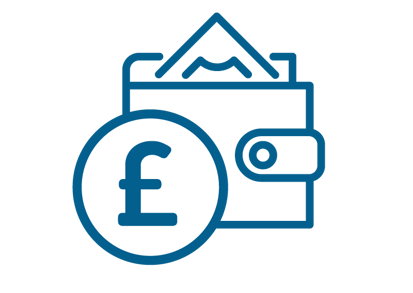Manage your energy costs
Switch energy supplier – Keep an eye on energy supplier prices to make sure you are not paying too much for your electricity and gas. There are a number of websites that can help you check whether you are getting a good deal and to switch energy supplier if not. The following websites can help you switch:
Read your meter regularly – Check your meter reading against your bill, especially if it is an estimated reading, to make sure that you’re not being charged for more energy than you’ve used.
Pay by direct debit – The cheapest way to pay your energy bills is by monthly Direct Debit and many energy companies offer discounts to customers who agree to pay this way. Some energy companies also give a discount if you opt for paperless online billing instead of receiving bills in the post.
Get a dual tariff deal – Buying both gas and electricity from one company is the cheapest way to pay. This is known as a 'dual tariff'.
Save energy
The Energy Saving Trust is an excellent place for advice and guidance on saving energy in the home.
Shine is a free energy advice service that offers telephone advice by trained energy advisors to help reduce utility bills and tackle energy debt. Shine is targeted at older people, people with disabilities, low-income households and families with dependent children.
Energy Saving top tips:
Programme your central heating – Ensure your central heating is programmed to only provide heating when you need it. See Operating your heating system effectively below to learn more.
Reduce heat loss – Reduce heat loss by drawing the curtains when it gets dark outside. This helps prevent heat escaping through the windows. You can also use thick curtains with linings. Reduce draughts by:
- Fitting a flap over the letterbox
- Fitting draught excluder strips around external door frames and window frames
- Tucking the bottom of curtains onto the windowsill
- Tucking curtains behind radiators.
Switch off appliances – Switch off your appliances completely. Not leaving them on standby could save you up to £37 per year.
If you keep your thermostat above 21°C then turning it down by 1 notch will deliver significant savings.
Kitchen tips –
- Boil a kettle with only as much water as you need
- Cover pots and pans when cooking, so they boil more quickly
- Consider using a microwave rather than a conventional oven if you are looking to heat up a small amount of food.
Operate your heating system effectively
You can adjust your heating in three key ways to make sure you are using it efficiently:
Set heating times through the time clock or programmer
The time clock or programmer automatically turns the heating and hot water on and off at times you set.
- The time clock is a dial set into your boiler with pins that you push in for the times that you want to the heating to be on.
- The digital programmer (or heating interface unit, HIU) is a box attached to the wall that enables you to programme different heating times for week days and weekend days.
You should set the heating to go off during the night and when your home is empty during the day. During freezing spells, keep some background heat on all the time to reduce the risk of burst pipes.
Set the overall heating temperature through the room thermostat
The living room thermostat is an essential part of your heating system which ensures that you don’t overheat your home. The room thermostat controls the heating to maintain the temperature you have set. It looks like a round dial attached to the wall or a digital read-out if you have a newer boiler. 18 to 21°C is the recommended range for maintaining a comfortable temperature.
Set different temperatures for different rooms through the thermostatic radiator valves
Newer radiators, or ones that have been serviced recently, will have Thermostatic Radiator Valves (TRVs). They have numbers on, usually 1–6. The valve shuts off the radiator once a room is at a certain temperature, depending on the number set.
How do you know which number to set the TRV to?
Here’s a handy guide, which assumes that your TRV goes from 1 to 6:
Bathrooms: set to 6. Bathrooms have a lot of moisture, which can cause damp and mould. Keep your bathroom warm to stop the moisture settling, and ventilate it properly to stop mould building up.
Living room: 5 or 6. This is where you spend most of your time, and usually where your thermostat is found.
Bedrooms: about 3. We tend to sleep better when in cooler rooms because our bodies cool down when we sleep, and we’re often covered in blankets/duvets.
Kitchens: 1-3. Your cooking will warm the kitchen.



